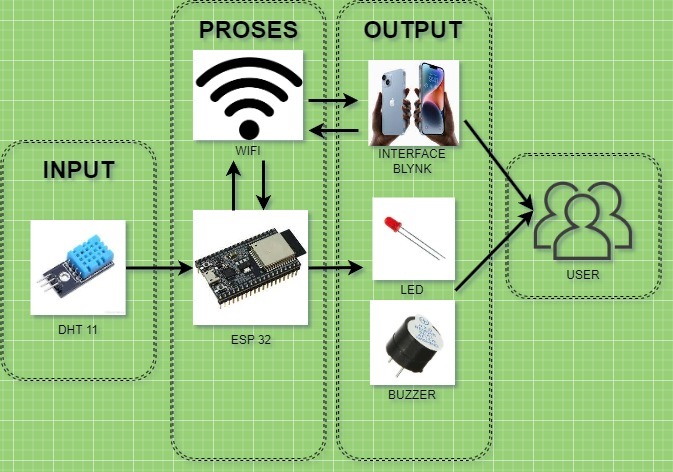Fire is an event involving uncontrolled burning or fire, which can damage property, the environment and even lives. Fires can occur in various places, such as buildings, forests, or other open areas. The causes of fires can vary, including electrical short circuits, human carelessness, flammable fuel, and natural factors such as lightning.
Fires can cause huge losses, both in terms of economy and loss of life. Therefore, fire prevention and effective fire management are essential in maintaining public and property safety.
A fire detector is an electronic or mechanical device designed to detect signs of fire or fire danger. The aim is to provide early warning so that preventive and evacuation steps can be taken as quickly as possible.
The following are several types of fire detection devices: Smoke Detectors, Heat Detectors, Fire Detectors, Gas Detectors. The use of fire detection equipment that is appropriate to the risks and environmental characteristics is very important to maintain security and safety. Modern fire detection systems are often connected to a control center or monitoring system that allows immediate response action in emergency situations.
Therefore, it is hoped that this tool will be able to take action quickly when there are indications of fire that can be monitored anytime and anywhere.
How to make tools:1. Prepare the tools and materials to be used according to the list above
2. Assemble the components to be used according to the provisions provided
3. Copy the coding provided and run the coding using the Arduino IDE application
4. Create a monitoring display with the Blynk application according to the image below
5. Copy the code contained in the Blynk profile such as Blynk template ID, Blynk template name, and Blynk auth token and include it in the Arduino IDE program code
#define BLYNK_TEMPLATE_ID "TMPL61hMUXeUk"
#define BLYNK_TEMPLATE_NAME "Deteksi Kebakaran DHT11"
#define BLYNK_AUTH_TOKEN "P5nX9v5hZo21w4TfAqSrT8btIxviwsDq"6. Don't forget to change the SSID and pass with the WiFi connected to the internet so that the ESP32 is online
7. Upload the program and the fire detection tool using DHT11 will be active
8. Observe what happens if the temperature is more than 65 degrees Celsius and the temperature is more than 500 degrees Celsius (in the experiment we used temperatures of 31 degrees Celsius and 33 degrees Celsius)
9. If you are close to a fire detector you can observe directly what happens if the temperature exceeds the specified temperature, but if you are far from a fire detector you can observe online with the blynk application


















Comments
Please log in or sign up to comment.